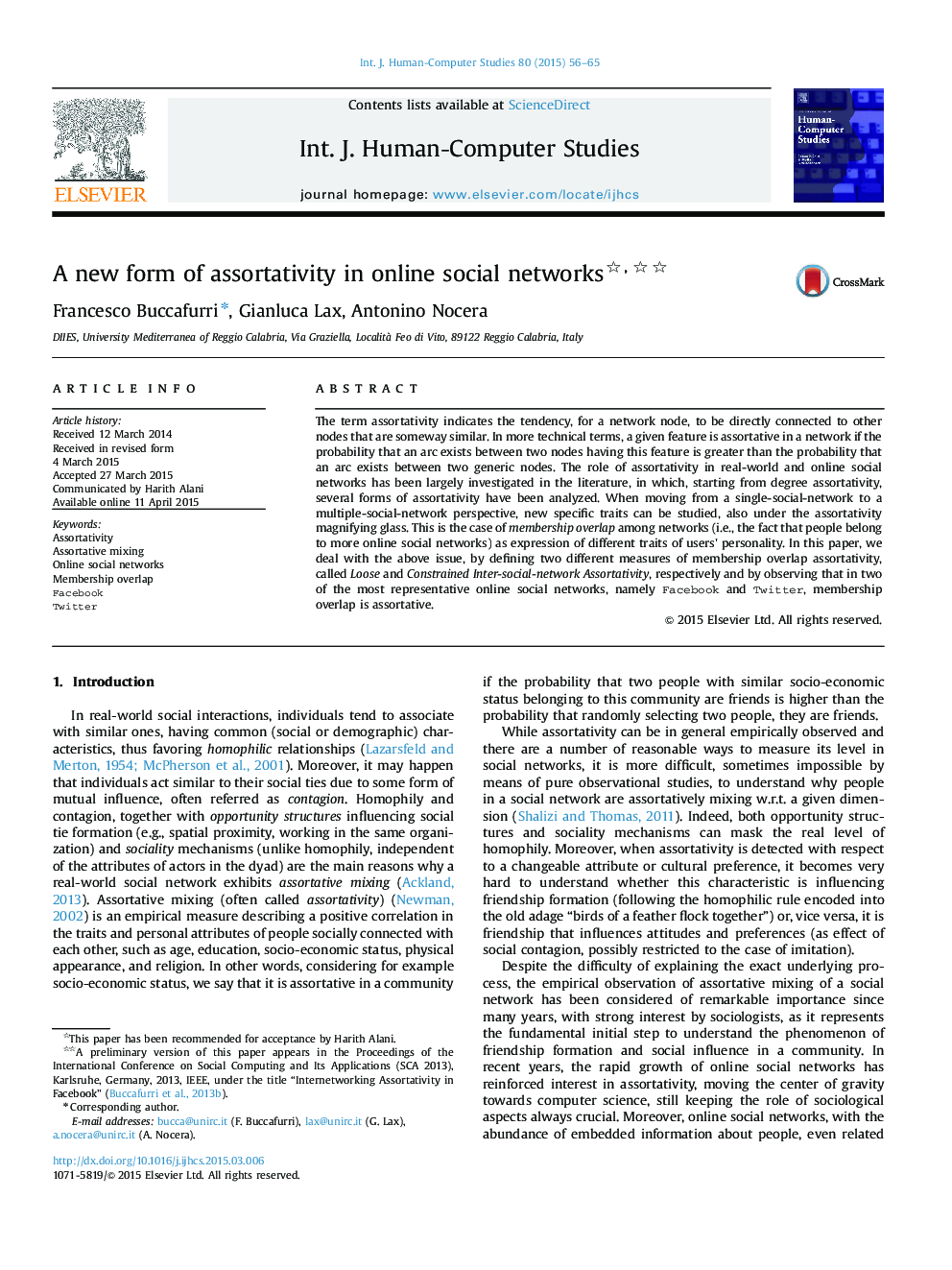| Article ID | Journal | Published Year | Pages | File Type |
|---|---|---|---|---|
| 6861083 | International Journal of Human-Computer Studies | 2015 | 10 Pages |
Abstract
The term assortativity indicates the tendency, for a network node, to be directly connected to other nodes that are someway similar. In more technical terms, a given feature is assortative in a network if the probability that an arc exists between two nodes having this feature is greater than the probability that an arc exists between two generic nodes. The role of assortativity in real-world and online social networks has been largely investigated in the literature, in which, starting from degree assortativity, several forms of assortativity have been analyzed. When moving from a single-social-network to a multiple-social-network perspective, new specific traits can be studied, also under the assortativity magnifying glass. This is the case of membership overlap among networks (i.e., the fact that people belong to more online social networks) as expression of different traits of users׳ personality. In this paper, we deal with the above issue, by defining two different measures of membership overlap assortativity, called Loose and Constrained Inter-social-network Assortativity, respectively and by observing that in two of the most representative online social networks, namely Facebook and Twitter, membership overlap is assortative.
Related Topics
Physical Sciences and Engineering
Computer Science
Artificial Intelligence
Authors
Francesco Buccafurri, Gianluca Lax, Antonino Nocera,
